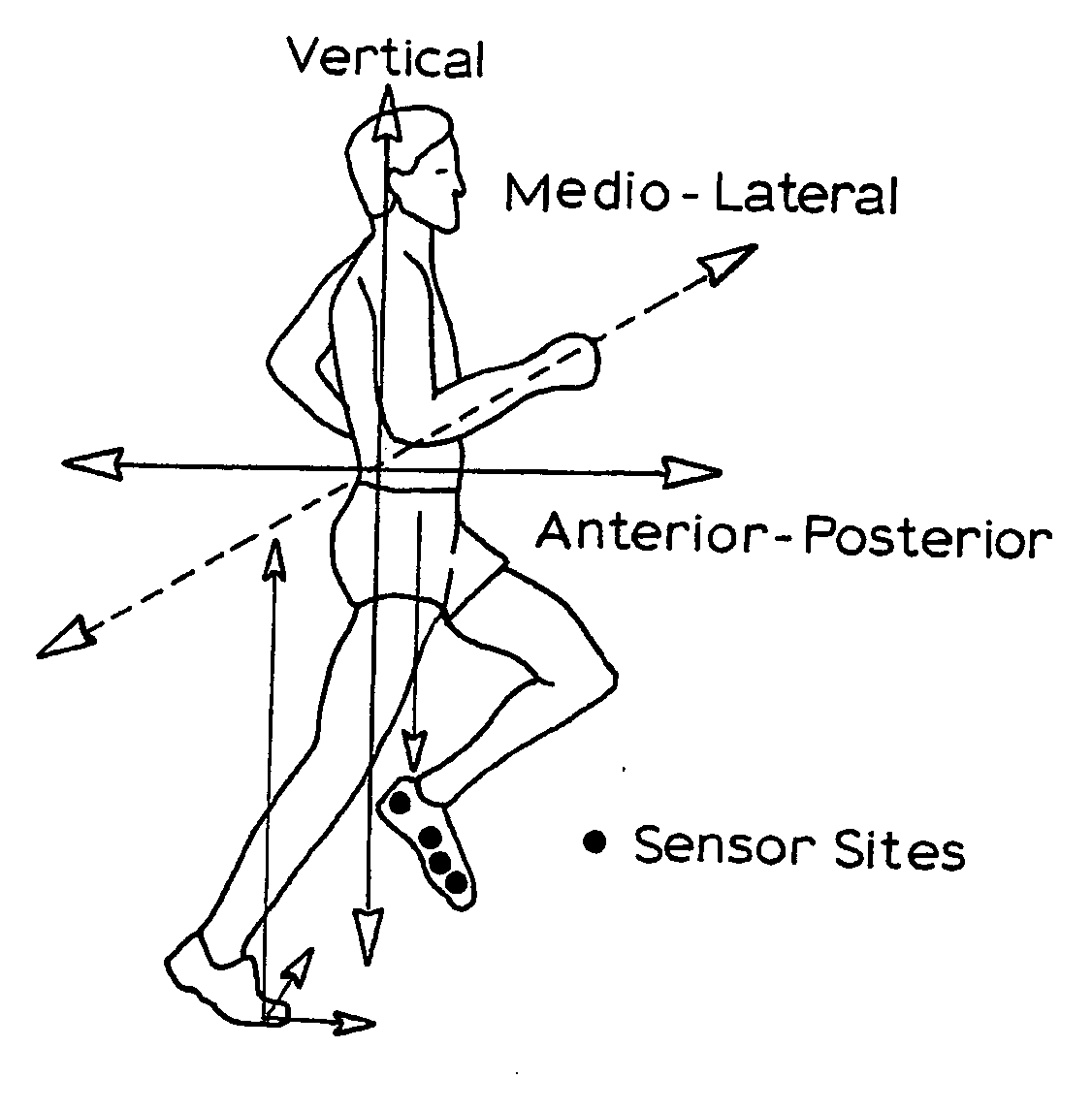Measuring forces in athletics
a technology of measuring force and athletics, applied in the field of measuring force in athletics, can solve the problems of limiting the knowledge that can be gained by this form of measurement system, and the failure of attempts to achieve success
- Summary
- Abstract
- Description
- Claims
- Application Information
AI Technical Summary
Benefits of technology
Problems solved by technology
Method used
Image
Examples
Embodiment Construction
[0024] Preferred embodiments of the invention will be described with reference to the drawings in which
[0025]FIG. 1 illustrates the placement of the sensors used in this invention;
[0026]FIG. 2 illustrates the schematic arrangement of the sensors and the communication arrangement;
[0027]FIG. 3 illustrates graphically the accelerometer and in shoe sensor data;
[0028]FIG. 4 illustrates the contact time and stride frequency as a function of running speed;
[0029]FIG. 5 illustrates the peak pressure for different sensors as afunction ofrunning speed;
[0030]FIG. 6 illustrates relative impulse (%) as a function of running speed for different sensors.
[0031]FIGS. 1 and 2 illustrate a portable data acquisition system developed to simultaneously acquire load data from four discrete in-shoe hydrocell sensors deployed at the major anatomical support structures of the foot (heel, first metatarsaolhead, thrdmetatarsal head and hallux) and three channels of acceleration measured at a site approxim...
PUM
 Login to View More
Login to View More Abstract
Description
Claims
Application Information
 Login to View More
Login to View More - R&D
- Intellectual Property
- Life Sciences
- Materials
- Tech Scout
- Unparalleled Data Quality
- Higher Quality Content
- 60% Fewer Hallucinations
Browse by: Latest US Patents, China's latest patents, Technical Efficacy Thesaurus, Application Domain, Technology Topic, Popular Technical Reports.
© 2025 PatSnap. All rights reserved.Legal|Privacy policy|Modern Slavery Act Transparency Statement|Sitemap|About US| Contact US: help@patsnap.com



